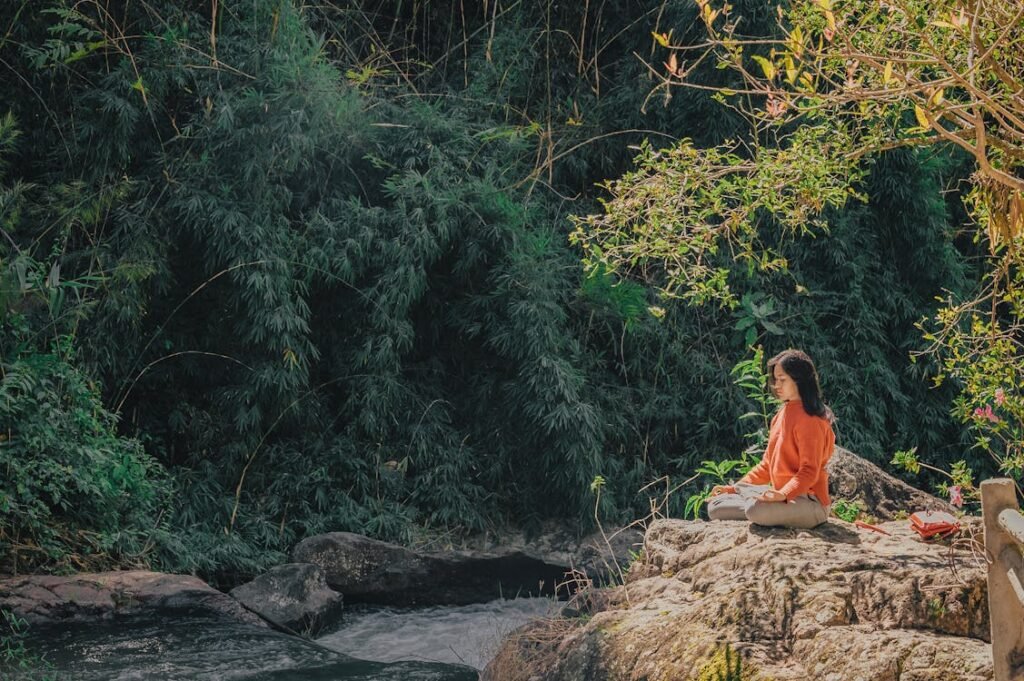
🌀 Introduction: Doing Nothing Isn’t Lazy—It’s Essential
In a culture that worships hustle, rest often feels like rebellion. But research shows that doing nothing is far from unproductive—it’s necessary. Slowing down doesn’t mean you’re falling behind. It means you’re creating space to recharge, reset, and refocus.
Welcome to the art of doing nothing—a mindful practice that enhances your brain, body, and creativity.
Table of Contents
🧠 Why Your Brain Needs Downtime
Our brains aren’t wired to be “on” all the time. Constant stimulation from screens, tasks, and notifications leads to mental fatigue, decision burnout, and chronic stress. But when you slow down:
- 🧩 You boost creativity and problem-solving
- 💡 You strengthen focus and memory
- 🛠️ You allow the brain to process and integrate information
- 😌 You reduce stress hormones like cortisol
According to neuroscience, moments of stillness activate the Default Mode Network (DMN)—the part of your brain responsible for reflection, self-awareness, and creative insight.
⚖️ The Paradox of Productivity: Less = More
Taking intentional breaks helps you:
- ✅ Return to work with renewed clarity
- ✅ Prevent burnout and overwhelm
- ✅ Work more efficiently, not just more
- ✅ Prioritize what really matters
As the saying goes, “You can’t pour from an empty cup.” Doing nothing gives your mind a chance to refill.

🌿 What “Doing Nothing” Actually Looks Like
“Nothing” doesn’t mean being lazy or zoning out on your phone. It means intentional stillness or low-effort presence. Here are a few ways to embrace it:
✨ Simple “Do-Nothing” Practices:
- Staring out the window without distractions
- Sitting in silence with a cup of tea
- Taking a slow walk without music or podcasts
- Lying on the floor and doing nothing for 10 minutes
- Watching the sky, birds, or clouds mindfully
These micro-moments allow your nervous system to reset and help your mind wander productively.
⏳ How to Add “Doing Nothing” to Your Day
Feeling overwhelmed by constant hustle? Learn how to add intentional pauses to your day—doing nothing might be your key to more peace and clarity.Here’s how to intentionally slow down without guilt:
📅 1. Schedule Downtime Like a Meeting
Block 15–30 minutes on your calendar labeled “Pause” or “Do Nothing.”
🧘♀️ 2. Start Your Morning with Stillness
Before you reach for your phone, spend 5 minutes doing nothing—just breathe and observe.
🌙 3. Create a Digital Sunset
Turn off devices an hour before bed. Let your mind wander or stare at the ceiling. It helps with sleep and mental clarity.
🌳 4. Go Outside Without a Goal
No podcast. No workout. Just walk, sit, or watch nature—unfilter.

🔁 Doing Nothing Is a Mindset Shift
We often tie our worth to how much we produce. But productivity isn’t about doing more—it’s about doing what matters. And that requires space.
“Almost everything will work again if you unplug it for a few minutes… including you.” — Anne Lamott
🎯 Final Thoughts: Make Stillness a Daily Ritual
The art of doing nothing isn’t a waste of time—it’s how we make time meaningful. It’s in the pauses where our best ideas, deepest calm, and clearest priorities emerge.
Slow down. Unplug. And give your mind the space to breathe. You’ll get more done by doing less.
📣 Call to Action (CTA):
🌿 Want to slow down without guilt?Learn more here. Fell free to read our other articles or you can write us here.